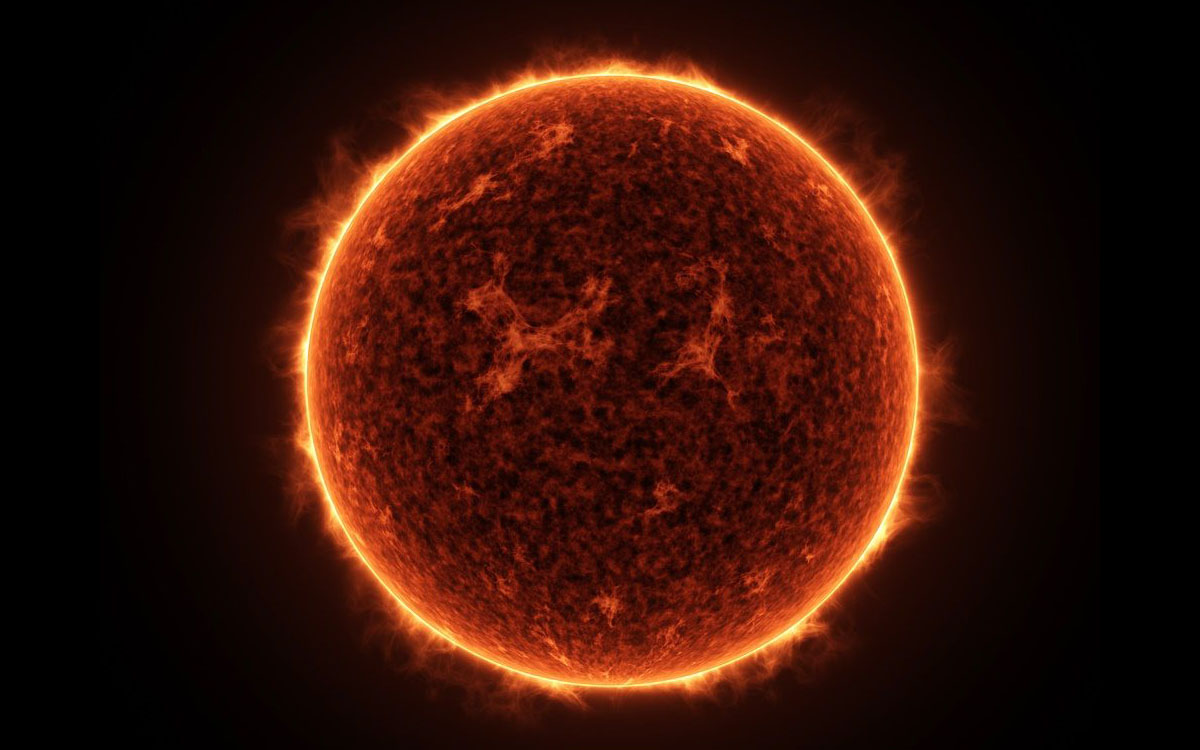learning about stars by listening to their hum

Usually, when we think of an explosion, we imagine a violent blast and a very loud bang, and the more energy the explosion produces, the louder the sound we expect to hear. Since sound is an oscillating pressure wave traveling through a medium, we could also say that any explosion taking place inside a medium that allows a vibration to propagate through it also creates a loud bang. So if a nuclear blast on Earth produces a deafening roar that can be heard for miles, the sound inside the core of a star should be millions of times more intense, especially when we consider that the Sun produces more than 386 trillion trillion watts per second by fusing a few million tons of hydrogen into helium. And it is. Sound waves created by stellar fusion are powerful enough to make stars flicker, and if we assign the resulting variations in brightness notes, we’ll find that stars actually hum as their thermonuclear fires churn. And by studying this hum, we can tell quite a bit about the star itself.
Now, the idea of measuring a star’s hum isn’t new and it’s one of the ways we know that our Sun is 4.6 billion or so years old. As it burns through its hydrogen, its core gets denser and denser with heavier elements, the sound travels to the surface faster, and the Sun’s overall pitch gets higher as the frequencies of its vibrations increase. The same principle applies to any other star. Small stars hum softer and at higher frequencies than their red giant and blue supergiant counterparts, which produce a slower, deeper growl. Just by listening to a distant star, we can estimate its size and give it an age by listening for cues as to its core’s composition. And that’s exactly what the Kepler Telescope is doing when it stares into a patch of sky, looking for a slight dip in the stars’ brightness indicating that a planet, ideally a rocky, terrestrial sized one, passes in front of it. In a very interesting feat of multitasking, the telescope’s observations are tracking down alien solar systems and giving us more a more accurate stellar census of the galactic neighborhood.
For example, thanks to Kepler’s ability to detect the natural flickering of distant sun, we know that the star with the catalog name KIC 11026764 is 5.94 billion years old, that it’s a smidgeon more than twice as wide as the Sun, and that it’s running on its last fumes of hydrogen, its core ready to contract as the rest of the star slowly balloons into a red giant. Unfortunately, it would be pretty difficult to measure exactly what happens to this sun step by step during the transition because the process will last for millions of years, but Kepler also has data on new red giants and their oscillations so a more targeted survey could provide thousands of stars in nearly all stages of expansion, providing astronomers with more data for their models of stellar evolution. Of course, as you might imagine, there is a catch. Even though the vibrations being recorded by Kepler can give clues to the age of a star, the core’s composition has to be statistically inferred based on the overall sample in which its hum was collected. The best way to study an alien sun’s true chemical mix is by studying its spectrum.
Still, the information you can collect just by listening to a star’s sound waves and quakes adds a very powerful tool in astronomers’ arsenals, and it may be something ground based observatories may want to try to collect in the future. Though considering that the Earth’s atmosphere already distorts starlight pretty severely for such measurements may be very difficult to overcome, even with bigger mirror arrays.





